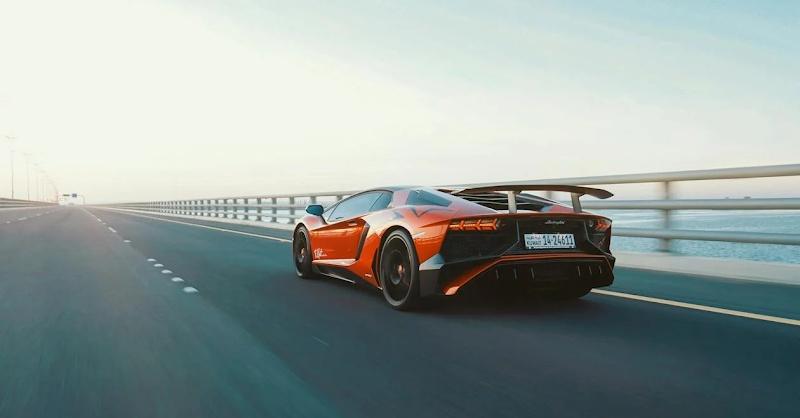The quest for speed has always been a defining element of the sports car ethos, captivating enthusiasts and manufacturers alike. This pursuit is not merely about the raw thrill of acceleration but a comprehensive challenge that spans engineering, design, and technology. Manufacturers globally are in a relentless competition to eclipse each other, creating machines that not only push the envelope of automotive performance but also redefine the very limits of what’s considered possible on four wheels.
As we delve into the realm of the top six fastest sports cars, it becomes evident that these marvels of automotive engineering are much more than their staggering top speeds. They are a harmonious blend of precision engineering, cutting-edge technology, and artful design, each model telling its own story of innovation, ambition, and the relentless pursuit of excellence. Yet, with great power comes great responsibility, and the inherent risks associated with piloting these machines at breakneck speeds cannot be understated. It’s a domain where the exhilaration of pushing the boundaries is juxtaposed with the imperative of advanced safety measures and responsible driving practices that can lead to tragic motor vehicle accidents.
- Bugatti Chiron Super Sport 300+ – The epitome of speed and engineering prowess, the Chiron Super Sport 300+ is designed to break barriers, famously exceeding the 300 mph mark. With its quad-turbocharged W16 engine, it delivers unparalleled performance. However, driving at such breakneck speeds poses significant risks, including decreased reaction times and increased difficulty in handling, particularly in adverse weather conditions or in the event of sudden obstacles on the road.
- Koenigsegg Jesko Absolut – Known for its extraordinary acceleration and top speed, the Jesko Absolut is powered by a twin-turbo V8 engine. This car is a testament to Koenigsegg’s innovation, featuring advanced aerodynamics for stability at high speeds. The high-speed capabilities demand expert driving skills to manage the immense power and potential for loss of control, highlighting the importance of specialized training for drivers.
- SSC Tuatara – The SSC Tuatara aims for hypercar supremacy with its remarkable aerodynamic design and a powerful engine capable of achieving astonishing speeds. It’s a marvel of American engineering, focusing on lightweight construction and downforce. The dangers here stem from the car’s sensitivity to steering inputs at high speeds, requiring a heightened sense of awareness and precision from the driver to avoid accidents.
- Hennessey Venom F5 – Built with the goal of exceeding 300 mph, the Venom F5 combines a lightweight chassis with a potent V8 engine. Its focus on minimalism and performance makes it a contender in the speed race. However, the very features that enable its speed can also contribute to safety risks, such as high-speed instability and the potential for tire failure, underscoring the need for rigorous maintenance and checks before high-speed runs.
- Bugatti Veyron Super Sport – A previous record holder for the world’s fastest production car, the Veyron Super Sport blends luxury with performance. Its W16 engine allows it to reach incredible speeds, while its sophisticated design ensures comfort. The car’s extreme speed significantly increases the risk of high-speed impacts, which can be catastrophic, pointing to the critical need for advanced safety features and driver aids to mitigate risks.
- Aston Martin Valkyrie – A masterpiece that redefines the boundaries between luxury and speed, the Aston Martin Valkyrie stands as a testament to what happens when innovative engineering meets meticulous design. Crafted through a collaboration between Aston Martin and Red Bull Racing, the Valkyrie is powered by a formidable naturally aspirated V12 engine, enhanced by a hybrid system for unmatched power delivery. Its design, deeply rooted in Formula One technology, ensures it is as aerodynamically efficient as it is visually stunning, allowing for extraordinary speeds and handling. The integration of luxury within its cockpit does not detract from its performance ethos, offering drivers a unique blend of comfort and racing intensity. Yet, the Valkyrie’s capabilities bring to light the paramount importance of advanced safety mechanisms and the necessity for driver preparedness to navigate the exhilarating yet demanding conditions presented at the edge of automotive performance.
Driving the world’s fastest sports cars offers an exhilarating experience that pushes the envelope of automotive capabilities, blending cutting-edge engineering with the raw thrill of speed. Yet, this pursuit comes with its share of risks, from the physical and technical challenges of controlling such powerful vehicles at high speeds to the potential for severe accidents. The responsibility for mitigating these dangers falls not only on the manufacturers, who strive to incorporate the latest in safety technology and vehicle design, but also on the drivers themselves. It’s crucial that drivers possess a deep understanding of their vehicle’s capabilities, undergo advanced training, and adhere strictly to safety standards and regulations.
Moreover, the allure of speed must be balanced with a commitment to safety, emphasizing the need for a responsible approach to driving. This means recognizing the limits of human reaction times, the importance of maintaining vehicle control, and the unpredictable nature of road conditions and other drivers. Ensuring safety in such high-performance vehicles requires a synergy between state-of-the-art safety features and driver awareness and skill.
Ultimately, the enjoyment of driving some of the fastest cars on the planet should never compromise safety. The relationship between speed and safety is a delicate balance, achievable through continuous innovation in vehicle safety, informed and cautious driving, and a culture of respect for the power these machines wield. The goal is to ensure that drivers can experience the thrill of speed without losing sight of the paramount importance of protecting lives and minimizing risks on the road.
